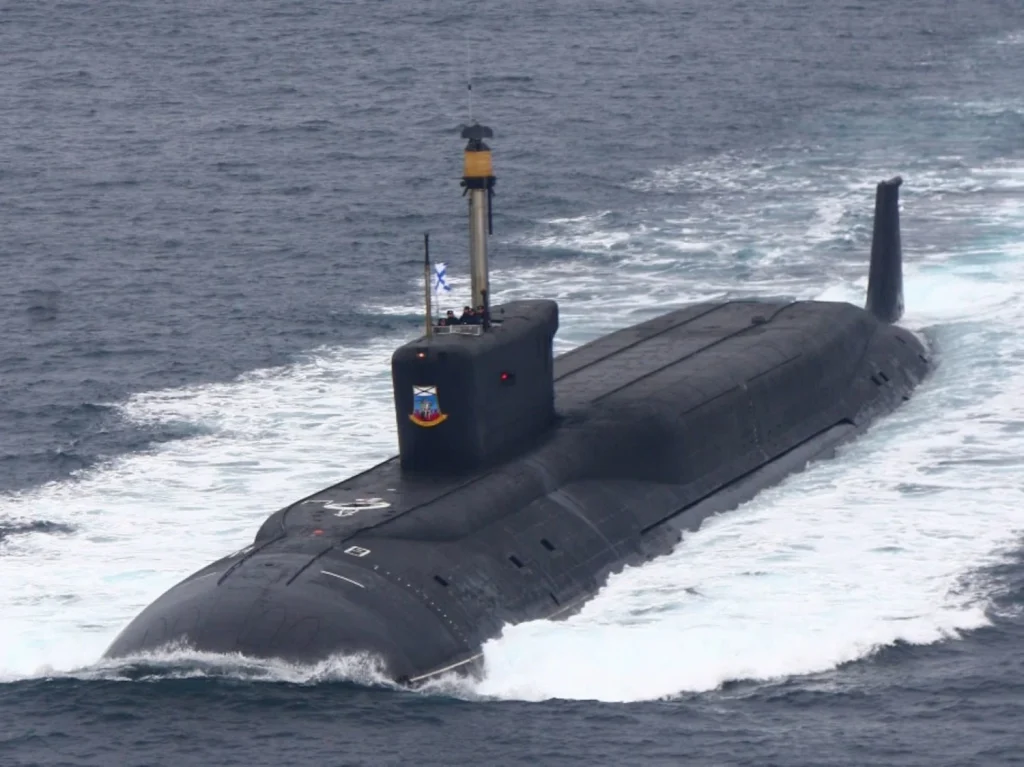Andrey Baranov, Deputy Director General for Foreign Economic Activities and Military Technical Cooperation at the Rubin design bureau, noted that the future generation of Russian nuclear-powered submarines will be smaller in size but equipped with the same number of weapons and drones. The submarines will be more stealthy owing to their faceted design and lack of propulsion shafts.
The Russian Navy has already expressed interest in the new generation of nuclear-powered submarines proposed by Rubin. “Interested. We are actively working with the fleet to create a new generation of boats,” Baranov told the media when asked how the command of the Russian Navy reacted to the concept.
This summer, during the eighth international military-technical symposium ARMY-2022, Russia’s Central Design Bureau for Marine Engineering “Rubin” showed a concept model of a new nuclear submarine, Arcturus, which might be delivered to the Russian Navy in the second half of the 21st century.
There is a possibility to decrease the displacement of modern submarines modestly, he told the media. However, it is impossible to avoid large sizes since the vessel’s adaptability relies on them. Regarding the future development of nuclear submarines in Russia, Baranov said that these future giant submarines should progressively become universal carrier platforms that can hold a vast payload of various varied technical equipment, including weapons.
In conjunction with a decrease in ship size and a potential active coating, the redesigned faceted shape of the Arcturus’s outlines minimises the reflected sonar signal and the boat’s detection range. Adopting a dispersed shaftless power plant with complete electric propulsion reduces noise. The presence of two propulsion units improves the missile carrier’s mobility and dependability, according to a representative of “Rubin.” during the Army 2022 event.
He emphasised that stealth would continue to be an essential characteristic of submarines, but as the techniques for detecting submarines are continually developing, so must the methods for maintaining stealth. Detection is increasingly dependent on active low-frequency devices due to noise reduction.
From the standpoint of the most probable place for the use of Arcturus, the Arctic at high latitudes, both options are of equal importance. The interest in this topic will only rise in the following decades. According to the source, establishing a position in polynyas is crucial.
TsKB “Rubin” is a specialist in the design of submarines and unmanned underwater vehicles. Rubin developed most Russian Navy submarines, including the strategic nuclear-powered Borey-class and non-nuclear-class Varshavyanka and Lada.
The most recent nuclear submarines from projects 955 “Borey” (strategic) and 885 “Ash” (multi-purpose), are now joining the fleet.

Borey Class is a cause of grave concern to the US Navy as they are very quiet and can spend a lot of time in the depths of the oceans, remaining unnoticed.
It is equipped with Sixteen R-30 Bulava-30 ballistic missiles capable of delivering six to ten warheads with a maximum yield of 160 kilotons. This SLBM has an effective range of 8,500 to 10,000 kilometres and a computerised inertial navigation system based on GLONASS. Multiple warheads (MIRV) and the ability to modify its flight trajectory make this missile a problematic target for American missile defence systems.
Plans for the Development of a New AIP System for Conventional Submarines
Air-independent propulsion (AIP) enhances the stealth of a submarine since it eliminates the need to surface for atmospheric oxygen, increasing its stealth.
“We are creating AIP based on fuel cells with the production of hydrogen from diesel fuel. We get water from oxygen and hydrogen, while electricity is released. The most difficult question is: where to get hydrogen? It is cumbersome to carry it with you; it is difficult and dangerous to load it. Therefore, we propose to get it from diesel fuel; this scheme is called reforming,” Baranov said.
The Varshavyanka Sub will be Equipped with Hydroacoustic Towed Antennas.
According to him, this strategy is promising in terms of stealth, simplicity of basing, and other crucial factors for the Russian Navy.
Baranov stated that the Russian Navy and foreign customers continue to place orders for Varshavyanka submarines. “Rubin” has conducted several studies indicating possible options for improving the project, such as equipping [the subs] with extended towed hydroacoustic antennas and modernising the power plant.
Submarines from Project 636 Varshavyanka are presently being delivered to the Russian Pacific Fleet, which will have six by 2024. Six other submarines from Project 636 have already been delivered to the Black Sea Fleet.
Alexei Rakhmanov, United Shipbuilding Corporation (USC) CEO, told Sputnik in March that the business can produce two non-nuclear Project 636 Varshavyanka submarines annually.
Varshavyanka is a reference to the Warsaw Pact. This type of diesel-electric assault submarine was originally designed for sale to the countries of the Warsaw Pact. After the fall of the Soviet Union, China, the class’s largest export market, supported the last phases of the submarine’s construction.
